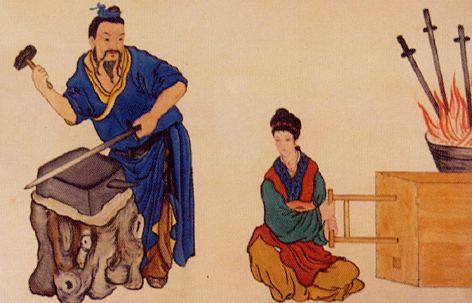 | ||
Swords have a long history in China. Bronze swords have been traced back to the bronze daggers of the Shang dynasty. Bronze long swords suddenly appeared during the mid-third century BC. Later swords were made of iron or steel. These metals were wrought, never cast. Swords commonly reached a length of 70–100 cm, although longer swords have been found. Chinese iron swords were used in Japan from the third to sixth century AD, but were replaced with Korean and native Japanese swords by the middle of the Heian era.
Contents
- Technical development
- Late Spring and Autumn period to early Warring States period 501350 BC
- Mid to late Warring States period 350221 BC
- Qin dynasty 221206 BC
- Early to mid Han dynasty 206 BC 1 AD
- Mid to late Han dynasty 1220 AD
- Early Three Kingdoms period to late Sui dynasty 220618
- Tang dynasty 618907
- Song dynasty 9601279
- Yuan dynasty 12791368
- Ming dynasty 13681644
- Qing dynasty 16441911
- References
The Chinese classify all swords into two types, jian (劍) and dao (刀). Jians are dual-edged while daos are single-edged.
Technical development
Source:
Late Spring and Autumn period to early Warring States period (501–350 BC)
Mid to late Warring States period (350–221 BC)
Qin dynasty (221–206 BC)
Early to mid Han dynasty (206 BC – 1 AD)
Mid to late Han dynasty (1–220 AD)
Early Three Kingdoms period to late Sui dynasty (220–618)
Tang dynasty (618–907)
Song dynasty (960–1279)
Yuan dynasty (1279–1368)
Ming dynasty (1368–1644)
Qing dynasty (1644–1911)
References
Chinese swords Wikipedia(Text) CC BY-SA
